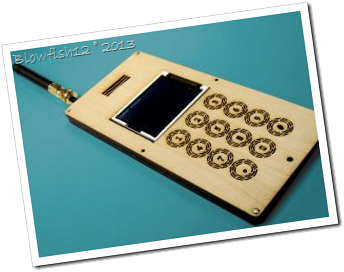David Mellis is a graduate student in the High-Low Tech lab, a group of engineering has built a custom cell phone himself. In 2005, he helped found Arduino, a company that makes easy-to-program microprocessors and sells them on simple circuit boards. The idea is to help people make electronic products without needing a degree in computer science.
They're popular among hobbyists, hackers and the sort of people who end up working at the Media Lab but they're hardly mainstream. Mellis wondered if he could take the idea further and build a cell phone. "The tricky thing is getting it beyond the people who are already doing electronics stuff," he says. So he decided to see if he could design consumer electronics that you can make yourself and actually use. He started with radios, speakers and computer mice before making the leap to the ultimate consumer device: cell phone.
I'm nervous at first – I've never soldered anything in my life. That makes me a good test subject, Mellis says. "I'm interested in trying to open up the process to people who haven't really done this stuff before," he says.
Soldering felt a little like doing a colour-by-numbers painting – I was filling in spaces on the circuit board, but my understanding of how the parts fit together was pretty sparse. And a lot of components were still out of my control. I used Mellis's software, for instance, which gives the phone capabilities similar to that of a 10-year-old Nokia phone: it can make and receive calls and texts, store up to 255 phone numbers, and has a clock.
The whole thing costs about $100 in parts, excluding the SIM card. Nearly all of the components came from online electronics or hobbyist shops, he says, and the instructions and source code are available on his website. However, the GSM module, which connects the phone to the cellular network and translates audio signals to the speaker and microphone, came from a Chinese e-commerce website.
The back of the phone has spaces for working parts: the GSM module; a microcontroller, which brings signals from the GSM module to the buttons and screen; a matchstick-sized antenna; and a SIM card holder. I bought the SIM card, with its month-to-month data-free plan, from the T Mobile store – connecting to the network is one thing I can't do myself.
When it was time to laser cut the case, I used Mellis's designs. That means my phone is identical to his prototype, which he has been using as his mobile phone for the past three months. The end result is a little coarse and chunky, but ends up about the size and thickness of my Android smartphone. I'm already thinking of ways to make it my own. I could knit it a case. I could paint it. I could design a new cover and have it laser cut myself.
I'm also thinking of ways I could use it. One of Mellis's labmates wants to make a phone with a single button for his grandma to call him. Another says that if she ever has kids, she'll give them a phone that only calls her.
I'm not ready to throw away my smartphone just yet. But I might start taking this phone on holiday, so I can escape Facebook and email but still make calls. And because I built it, I'm starting to grow quite attached to it.
Blowfish12@2013 blowfish12.tk Author: Sudharsun. P. R.
Related articles
- Cell phone buying guide (reviews.cnet.com)
- DIY Mobile Phone (makezine.com)
- Truphone offers local calling anywhere (reviews.cnet.com)
- DIY cellphone (boingboing.net)

